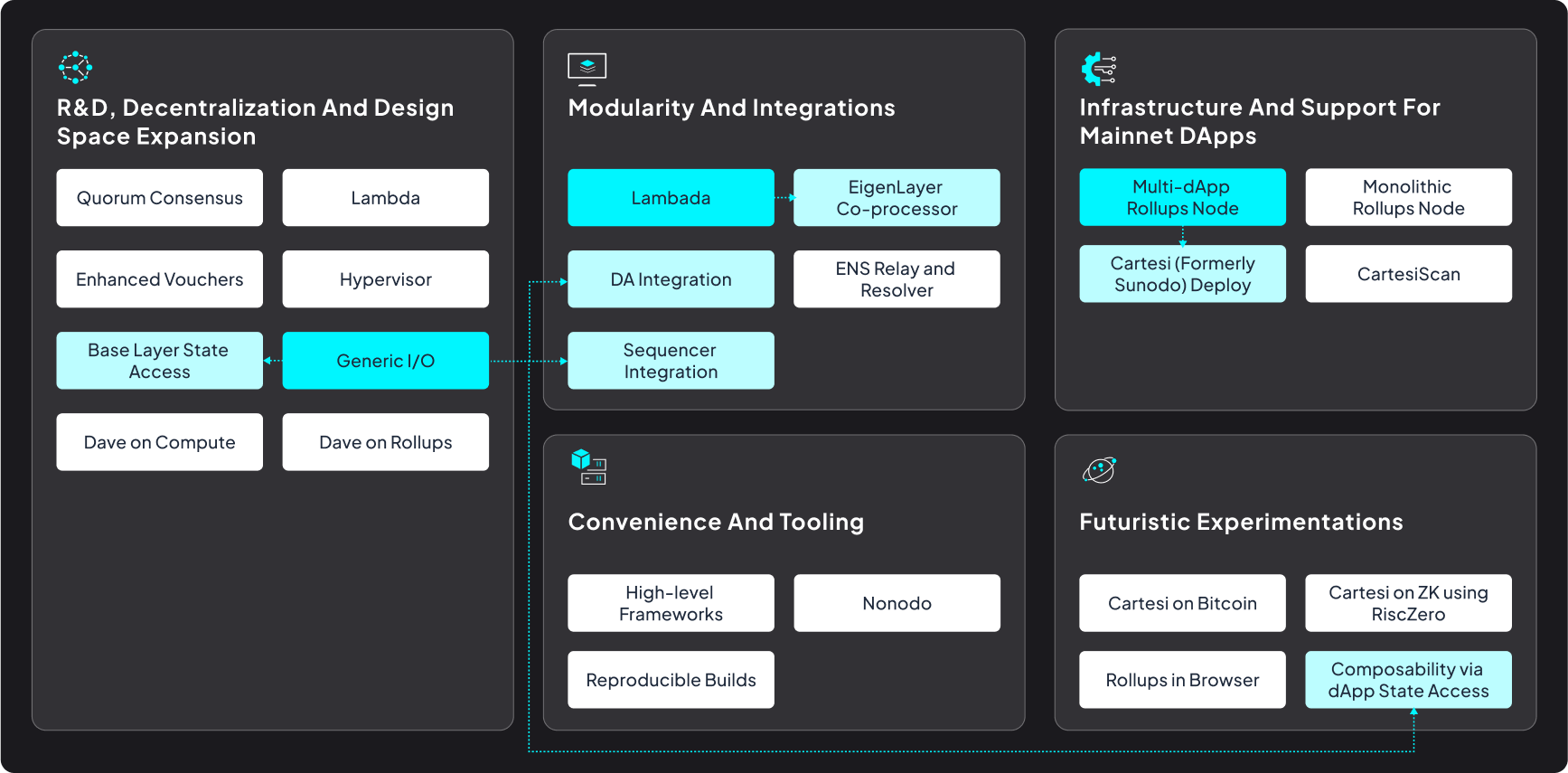Grokking Cartesi Public Goods: Dave
A look into a public good developed by Cartesi that solves common issues in fraud-proof protocols that validate L2 claims on a main L1 chain.
Written By EDUARDO TIÓ
The Cartesi ecosystem recently unveiled its Technical Evolution Plan, a first-of-its-kind technical roadmap that sets the development and progression of Cartesi's technology.
This article explores the ecosystem’s process for creating the TEP, a new approach in decentralized coordination and governance for the Cartesi community.
To address the coordination challenges posed by building core infrastructure in a fully distributed manner, Cartesi contributors recently adopted a new governance process for setting the ecosystem’s technical direction in the project’s Mainnet era.
The pilot process, described in further detail below, contains three distinct components: (1) the Technical Vision Forum; (2) the Technical Vision Council; and (3) the Technical Evolution Plan.
In addition to setting the ecosystem’s technical direction, the TEP also acts as a signal for ecosystem funding allocation, with the Cartesi Foundation recognizing the TEP as the ecosystem’s collective vision for guiding the Foundation’s funding decisions.
Instead of a single development company with outsized influence over core development, the core Cartesi infrastructure is primarily developed by many independent and unaffiliated working groups (called units) and individuals. Contrast this structure with the common setup in many other ecosystems, where there’s often a large software development company that researches, develops, and maintains core technical infrastructure.
For example, Avalanche has Ava Labs. Uniswap has Uniswap Labs. There are many similar examples. These core development companies typically hold tremendous influence over the technical direction of their respective ecosystems. They also typically maintain traditional corporate hierarchies, with C-suite executive teams making top-down decisions.
By dispersing influence and decision-making authority across a much more horizontal plane, the Cartesi ecosystem minimizes the potential for any one single point of failure for the project. But, as is often the case with decentralization, this increase in resiliency comes with a tradeoff. The absence of a top-down decisional hierarchy for core infra-building introduces operational inefficiencies that make large-scale distributed coordination particularly challenging. The TEP is Cartesi’s solution.

The first iteration of Cartesi’s Technical Evolution Plan marks the successful culmination of the pilot process, resulting in a first-of-its-kind technical roadmap for the Cartesi ecosystem.
We look forward to seeing the process evolve over time, with procedures for amending the TEP, electing new Technical Vision Council members, refining the council’s role in the ecosystem, and applying these learnings to create more robust governance frameworks for the ecosystem as a whole.
Join our newsletter to stay up to date on features and releases
A look into a public good developed by Cartesi that solves common issues in fraud-proof protocols that validate L2 claims on a main L1 chain.
Written By EDUARDO TIÓ
An overview of Cartesi’s block explorers, CartesiScan and Cartesi Explorer, including their features and their specific roles in the wider ecosystem.
Written By EDUARDO TIÓ
Diving into Cartesi Nodes as a fundamental part of the Cartesi ecosystem, looking into why and how they support Cartesi Rollups and the CVM.
Written By EDUARDO TIÓ
© 2024 The Cartesi Foundation. All rights reserved.







